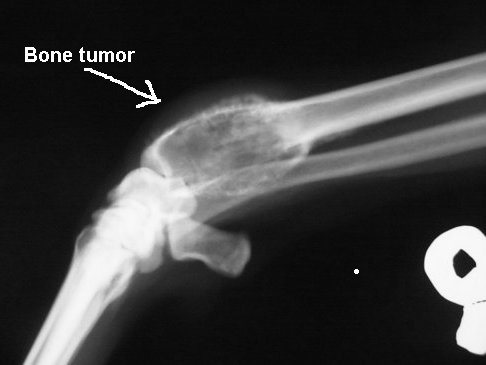摘要:一项针对骨癌的新研究将利用基因组研究与相关分析方法来鉴定新的基因,这类基因都是会导致骨癌发生的相关基因,该研究还针对青少年和年轻人建立了个体化的血液检测。SCAT全面资助了这项研究的开展,希望这项新的研究能通过更好的诊断和检测,来帮助治疗骨癌等难以攻克的疾病。

Bone tumor
Each year approximately 80 children and young adults develop osteosarcoma in the UK. This painful cancer of the bone tends to affect children and young adults and is normally treated using chemotherapy and surgery. The causes of the disease are not well known and measuring response to treatment relies on scanning and imaging. The new study seeks to bring both greater understanding to processes of developing the condition and create improved methods of measuring disease regression.
"We hope that this research project will improve the way patients with cancer are monitored and will guide the best drug treatment for the cancer in each patient," says Professor Adrienne Flanagan from the UCL Cancer Institute, and Medical Director of the Royal National Orthopaedic Hospital (RNOH), "It is really important that we exploit new tools that emerge from cutting-edge research to see how they can benefit patients with bone tumours in the future."
"We need the support of patients and of the wider public to make our aim of moving towards delivery of personalised cancer treatment a reality."
Professor Flanagan, consultant pathologist at the RNOH and scientist at UCL Cancer Institute, worked with colleagues from the Wellcome Trust Sanger Institute, in which they discovered a novel cancer-causing mutation in chondrosarcoma, the second most common cancer of bone. The results of this study were published recently online in the The Journal of Pathology.
In this new programme, scientists will use recently developed methods to hunt for changes in the genomes of cancer patients, trying to pinpoint genes underlying in the disease. At the same time, they will develop new tools to monitor the disease in patients through the course of treatment. They hope that their methods, which look for tumour-specific DNA in the bloodstream of patients, will become routine for patients in the future.
"Currently, the response of patients with osteosarcomas to treatment is monitored by scanning tumours using imaging techniques," says Dr Peter Campbell. "In contrast, blood cancers have long been monitored using simple tests that pick up recurring mutations in tumour cells in the blood and show how a patient is responding to treatment. The new project aims to see if we could develop and apply similar methods to osteosarcomas".
The patients are being treated at the RNOH and University College London Hospital (London Sarcoma Service), and the research project is largely funded by SCAT Bone Cancer Trust based at the RNOH, with contributions from other charities including the Bone Cancer Research Trust, Rosetrees and others. The research is being carried out in collaboration with UCL Cancer Institute and the Wellcome Trust Sanger Institute.
The team will sequence the complete genome of 50 patients with osteosarcoma and will look in their plasma in many of these patients before and after chemotherapy treatment to find rearrangements - shuffled chunks of DNA - in the small amounts of DNA that have leaked out from the osteosarcoma into the bloodstream. They will be searching for rearrangements that are specific to each patient.
By developing a picture of the unique profile of mutations of each patient's cancer and then using these mutations to monitor the amount of cancer derived DNA circulating in the blood, the clinicians hope they can deliver treatments to patients in a personalised way
In addition to seeking improvements in treatment, the researchers are looking for novel genes giving rise to osteosarcoma. The team will sequence in full the gene-containing regions of the genome in 100 osteosarcoma samples.
"The future of cancer genetics lies ultimately in drawing a complete picture of each and every mutation for each and every cancer patient who visits a hospital," says Professor Mike Stratton, Director of the Wellcome Trust Sanger Institute and one of the project leaders. "But there are a number of steps on the way. By concentrating in this study on the so called 'active' areas in the genome we can begin to pick out mutations that might be driving cancer even as we embark on the journey towards comprehensive catalogues of mutations for this, and a whole range of other human cancers."
Ultimately, the team on the osteosarcoma study will generate complete genome sequences for the whole genomes of osteosarcomas - allowing them to look in even finer detail at the spectrum of mutations in the cancer and distinguish the cancer causing mutations from the innocent bystanders.
"The research is promising, but its success relies on continued support from the public," says Mr Steve Cannon, bone tumour surgeon at the RNOH and Chairman of SCAT, the Bone Cancer Trust. "It is great that we have been able to get this project up and running, but donations will continue to be necessary if we are to succeed in the fight against osteosarcoma and other bone cancers. In what is without doubt an exciting and important moment in the application of genetic science in cancer research, it is only right that we should be looking to apply the cutting edge tools that are now available to bone cancer."
"Osteosarcoma is an aggressive cancer; we need an aggressive approach to tackle its effects."







